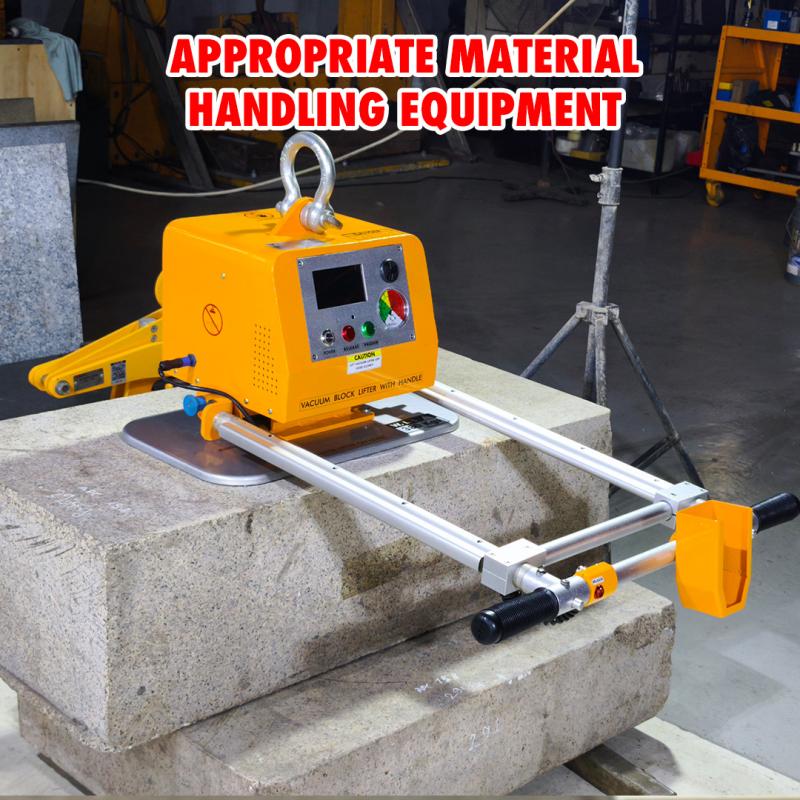



Selecting the right material handling equipment—from robust frames and precision clamps to high-performance lifters and cranes—ensures that loads move smoothly, workers stay safe, and throughput targets are met. In this article, we explore why choosing the appropriate handling equipment matters, examine key equipment categories, and provide actionable guidance for navigating the material handling industry.
Material handling encompasses the movement, storage, protection, and control of materials throughout manufacturing, warehousing, distribution, and disposal processes. To learn more about foundational concepts, see Understanding Material Handling. By aligning equipment capabilities with your specific workflows, you minimize damage, reduce labor costs, and enhance overall safety.
Any comprehensive material handling system must deliver:
Safe Load Movement: Preventing personnel injury through ergonomic designs and automation.
Operational Efficiency: Reducing cycle times with continuous, automated workflows.
Product Protection: Safeguarding goods—whether fragile glass or heavy stone blocks—against impact and abrasion.
Scalability: Adapting to changing production volumes without major capital outlay.
Industrial-grade frames support and secure loads during transit. The Role of Transport Frames – Heavy duty reveals how reinforced steel construction and standardized dimensions streamline forklift cycles, minimize tipping risk, and simplify stacking. When evaluating transport frames, prioritize load rating, durability, and compatibility with your forklift tines.
Precision grip is essential for irregular or smooth-surfaced loads. Lifting clamp attachments eliminate slippage and reduce manual handling. Discover Heavy Duty lifting clamps for Marble & Glass that combine adjustable jaws, non-marking pads, and integrated roller beds. For gently handling sheet materials, pairing slab lifter clamps with vacuum lifters ensures zero-scratch transfers.
Vertical mobility enhances ergonomics and workflow agility. The Description of the Scissor Clamp Lifter details hydraulic and electric models that raise platforms or loads smoothly to workstation height. Scissor lifter units reduce worker fatigue, prevent back strains, and integrate easily into conveyor-fed assembly lines.
For heavy or bulky loads, overhead systems deliver unmatched coverage. Learn What Are Overhead and Gantry Cranes to compare fixed-bridge, semi-gantry, and full-gantry designs. These cranes streamline gantry crane material handling by reducing ground-level congestion, improving cycle times, and enhancing safety through precise hoist control.
Forklifts are versatile workhorses in any warehouse. Extend their reach and functionality with specialized attachments. Choose the Forklift Boom to handle overhangs, deep racking, or suspended loads. Properly selected booms transform standard forklifts into multi-purpose lifting equipment, reducing the need for additional machinery.
Vacuum lifters excel at handling smooth, fragile materials like glass, metal sheets, and stone slabs. Why Choose the Aardwolf AVLP4-1000 showcases features such as dual-circuit safety, variable pad configurations, and wireless controls. High-performance vacuum lifters slash handling time and virtually eliminate product damage in automated or semi-automated workflows.
Moving heavy stone slabs demands both power and precision. The The stone transportation process outlines eco-friendly transport frames and optimized routing strategies to minimize handling steps. Combine these frames with roller beds and clamp lifters to reduce physical strain and increase throughput.
For complex stone workflows, end-to-end automation unlocks new efficiencies. Explore Innovative Transport Solutions to see how digital routing, automated reclaimers, and modular conveyor loops work together to handle metric tons of stone daily with minimal manual intervention.
Block-handling operations benefit from horizontal clamp designs. Review Ardwolf Horizontal Stone Lifting Clamp Features for jaw geometry that maintains a precise 4° lean, ensuring stability during movement. Learn how block lifting clamps improve efficiency by reducing cycle times and eliminating the need for custom jigs.
Glass manufacturing and installation require specialized equipment. The lifting for glass industry system combines multi-pad vacuum cups with adjustable tilt and rotation, enabling single-operator lifts of heavy panes. These vacuum lifter slab lifter combinations minimize manual carry and ensure zero-contact handling.
Compact and versatile, jib cranes handle point-load operations with precision. Positioning the jib crane arm outlines best practices for mounting, load charts, and swing limits. Use articulating jib arms to load machine tools, position molds, or transfer goods from conveyors to assembly stations safely.
Securing cargo is as critical as lifting it. Implement ratchet tie down traps for robust load restraint on trucks, trailers, or racking. Follow guidelines from a lashing strap to ensure straps are routed correctly, tensioned evenly, and locked safely—preventing load shifts and related accidents.
Every piece of equipment must support your operational goals. Learn how to craft material handling systems with strategic objectives by visiting material handling systems with strategic objectives. Align throughput targets, safety KPIs, and budget constraints when designing workflows.
Poorly matched equipment leads to downtime, higher injury rates, and inflated costs. For guidance on evaluating vendor offerings, explore Importance of Material Handling Equipment. In high-volume warehouses, part quality and compatibility with existing systems are non-negotiable.
Reputable material handling companies offer end-to-end support: site surveys, custom design, installation, and after-sale service. Review The best quality material handling equipment parts for warehouse to understand how premium parts translate into lasting reliability and ROI.
Faster Cycle Times: Automated conveyors and lifters handle loads continuously.
Reduced Labor Costs: Machines handle heavy or repetitive tasks, allowing staff to focus on value-added activities.
Ergonomic Designs: Scissor lifter and vacuum systems minimize manual exertion.
Standardized Protocols: Equipment rated for specific Safe Working Loads (SWL) enforces compliance with industry regulations.
Lower Damage Rates: Precision clamps and vacuum lifters protect goods.
Reduced Downtime: Premium parts and preventive maintenance schedules avert unplanned stoppages.
Scalability: Modular solutions grow with demand, maximizing long-term asset utilization.
In the dynamic material handling industry, selecting the appropriate lifting equipment and components is not optional—it’s essential for competitive performance. Whether you’re upgrading your fleet with heavy duty transport frames, integrating advanced vacuum lifters, or deploying gantry crane material handling systems, every investment must align with your workflow, safety standards, and strategic objectives. By embracing best practices, partnering with trusted material handling companies, and choosing high-quality parts, you’ll ensure your warehouse operates at peak efficiency—today and into the future.
Sign up to receive the latest info on new Aardwolf products, special offers and more.
By signing up you agree to receive emails from Aardwolf with news, special offers, promotions and other information. You can unsubscribe at any time.